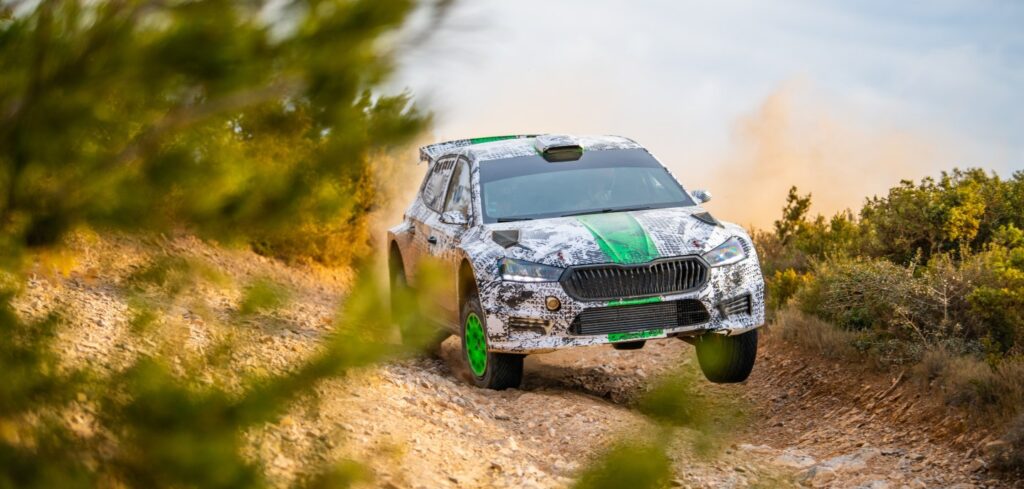Skoda Motorsport has highlighted that the new Fabia Rally2, currently under development, will represent a significant advance in crew safety compared to its predecessor. The latest Fabia is based on a completely different chassis to the current car, with the switch to the Volkswagen Group’s Modular Transverse Matrix MQB-A0 platform giving the Škoda Motorsport engineers the opportunity to further improve the safety structure of the car.
“The production Škoda Fabia’s new platform is made of high-strength and ultra-high-strength steel in areas critical for passenger safety. This is beneficial for the new generation Rally2 as well. It translates into further improved torsional strength of the floor structure and better durability of the rally car’s bodyshell,” explained Tomáš Karniš, safety engineer at Škoda Motorsport.
Since its debut in 2015, the current generation Fabia, in both R5 and Rally2 trim, has proved its strength in accidents on special stages. “The analysis of these accidents gave us vital data to move the safety standards of the new generation even further. We aligned this data with other experience gathered with the current rally car and redefined the load cases for the new generation bodyshell,” said Karniš. Škoda’s engineers conducted multiple FEA analysis loops to refine the new design. “The calculations were followed by extensive testing on asphalt and gravel roads to validate the result of the simulation,” Karniš added.
With the form of the roll cage (constructed from over 35m of chromoly tube) largely dictated by regulation, the next-gen car’s safety cell actually exceeds the FIA requirements in certain areas, Škoda notes. For example, the gussets providing resistance to side impact are significantly oversized compared to the FIA rules. “Our technicians apply an inventive way of building this part of the car: the safety cell is hand-welded by certified experts onto the bare platform during construction – before the side parts and the roof are added. This method guarantees higher accuracy as well as better tube connections and body shape copying,” said Karniš.
In addition to the oversized gussets, further steps have been taken to improve the side impact performance of the cage. Škoda Motorsport worked on three areas: seat mountings, roll cage door cross and door panels. For example, the left and the right side of the chassis are connected by the structure of the seat holders and an additional rail. Thus, the forces of a side impact are better transferred from one side of the car to the other. “This reduces deformation of the bodyshell and the roll cage. We surpass the FIA requirements also in this area,” commented Karniš. “The padding of the new generation also exceeds the FIA mandated volume in this area as well.”
Additionally, six layers of carbon fiber and Kevlar seal the foam in the direction of the cockpit to protect the crew from sharp fragments. The seatbelt mounting system has been improved as well. An additional roll cage tube on each side of the car has been added to increase the strength and stiffness of the shoulder strap mounting points.
One welcome side aspect of the further improved safety structure is increased durability of the bodyshell, which translates into reduced running costs for customer teams. “The durability of the newly developed bodyshell is on a different level compared to our current rally car,” Karniš said.



